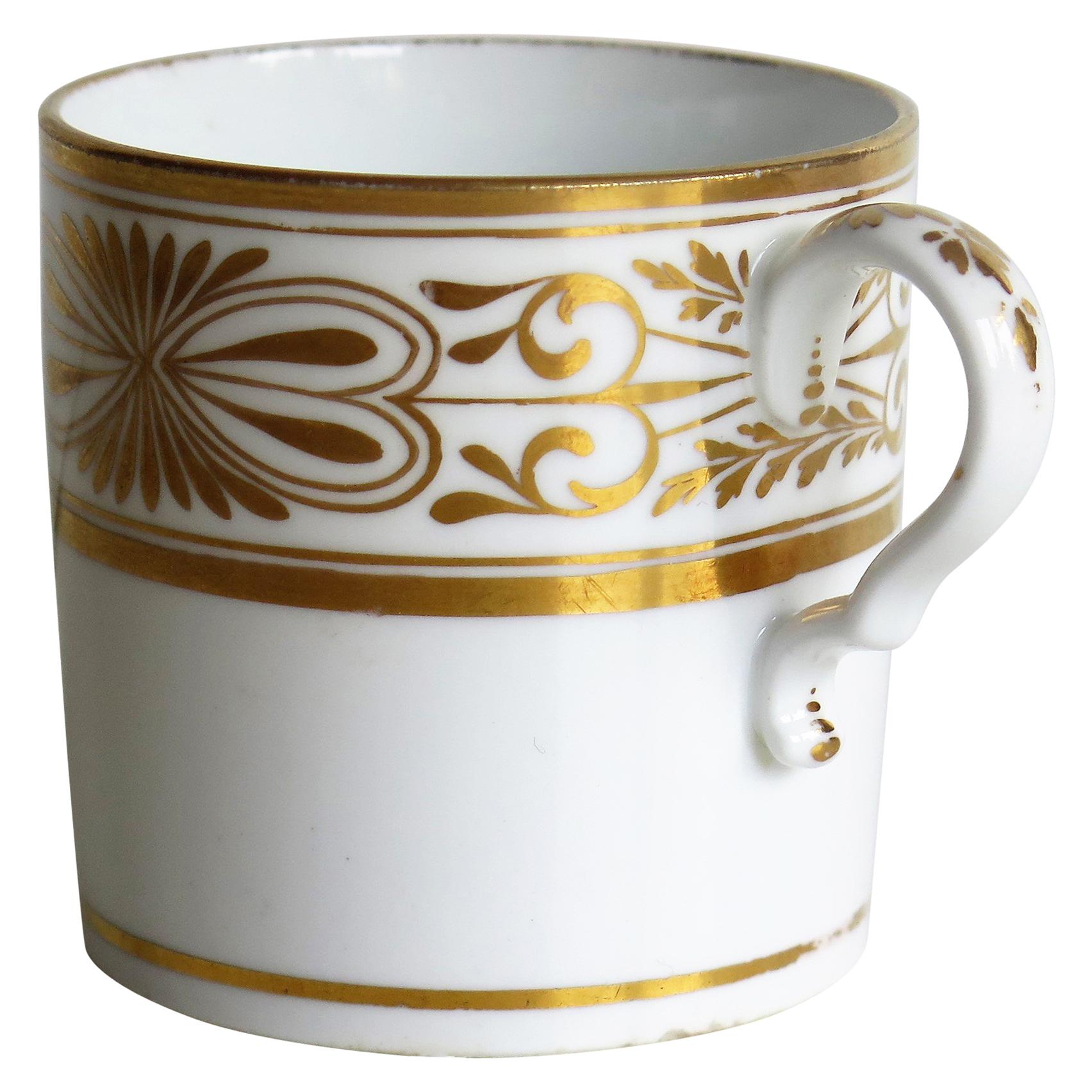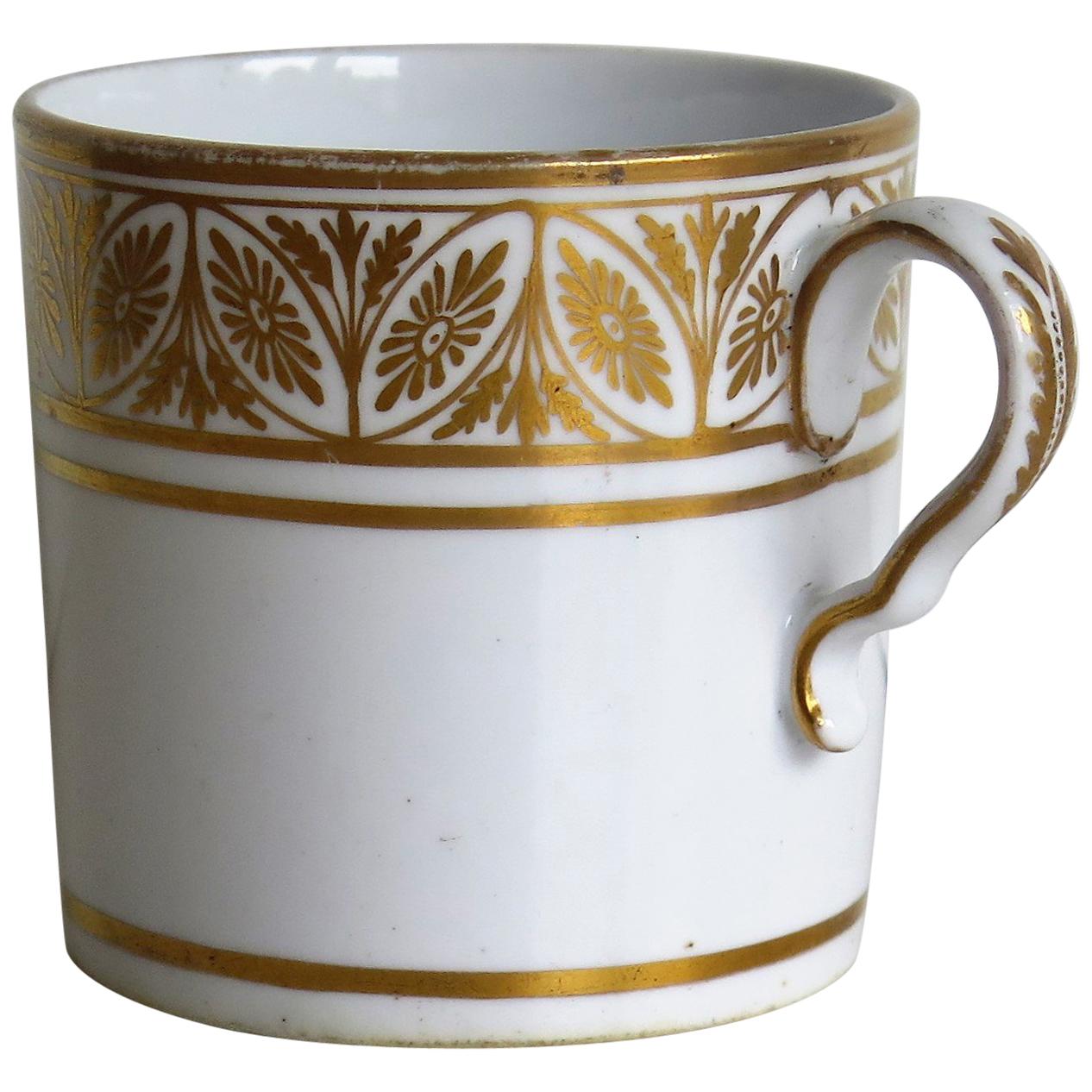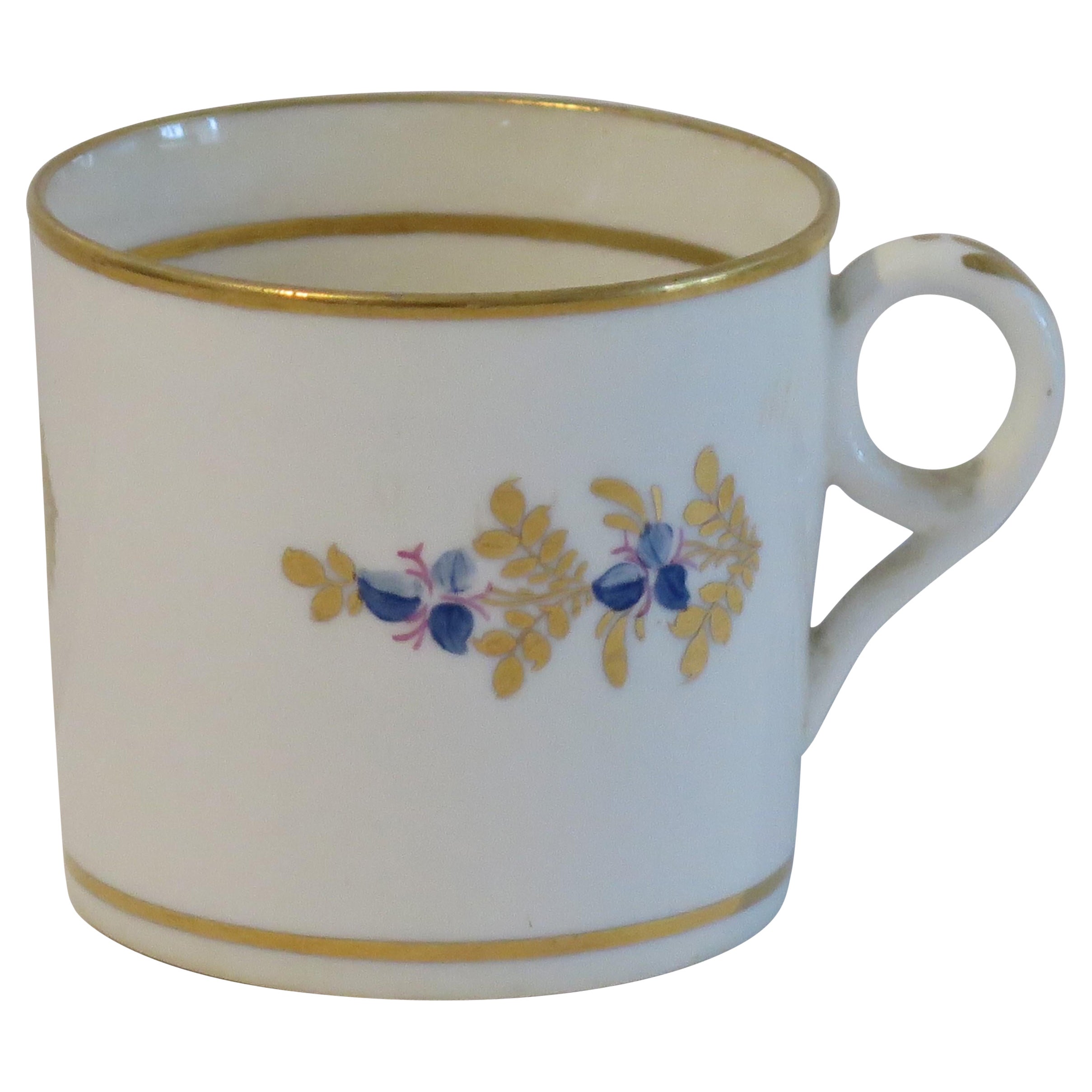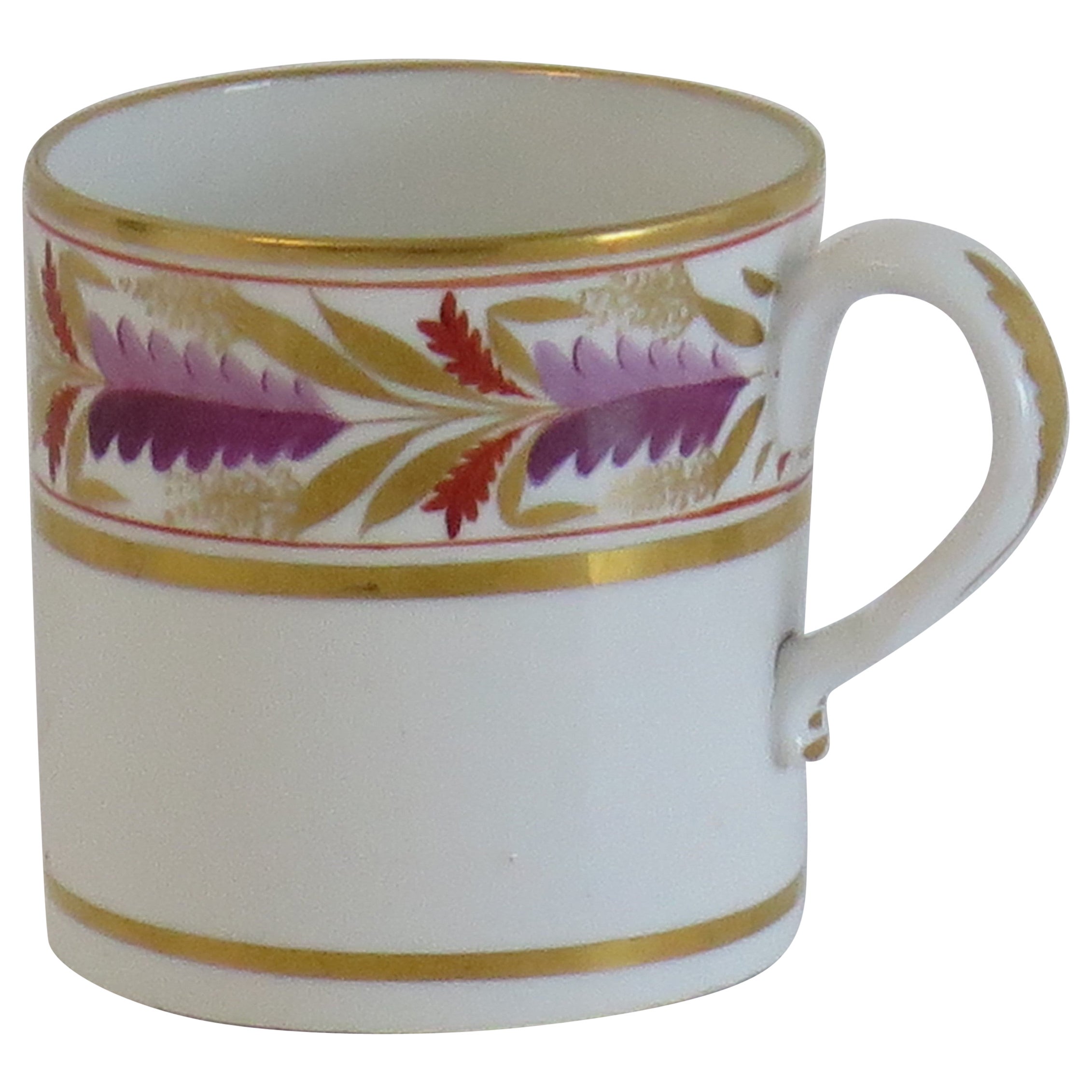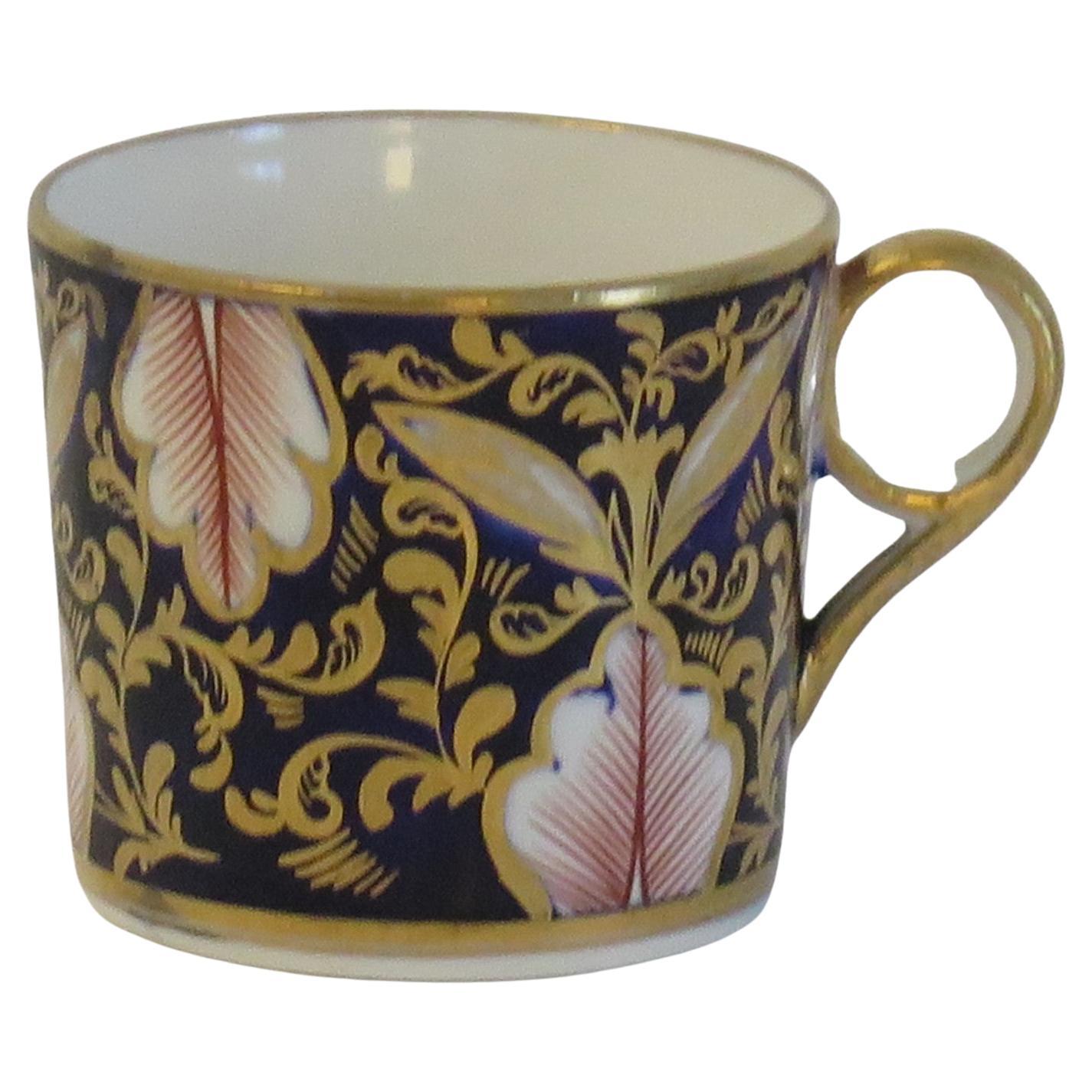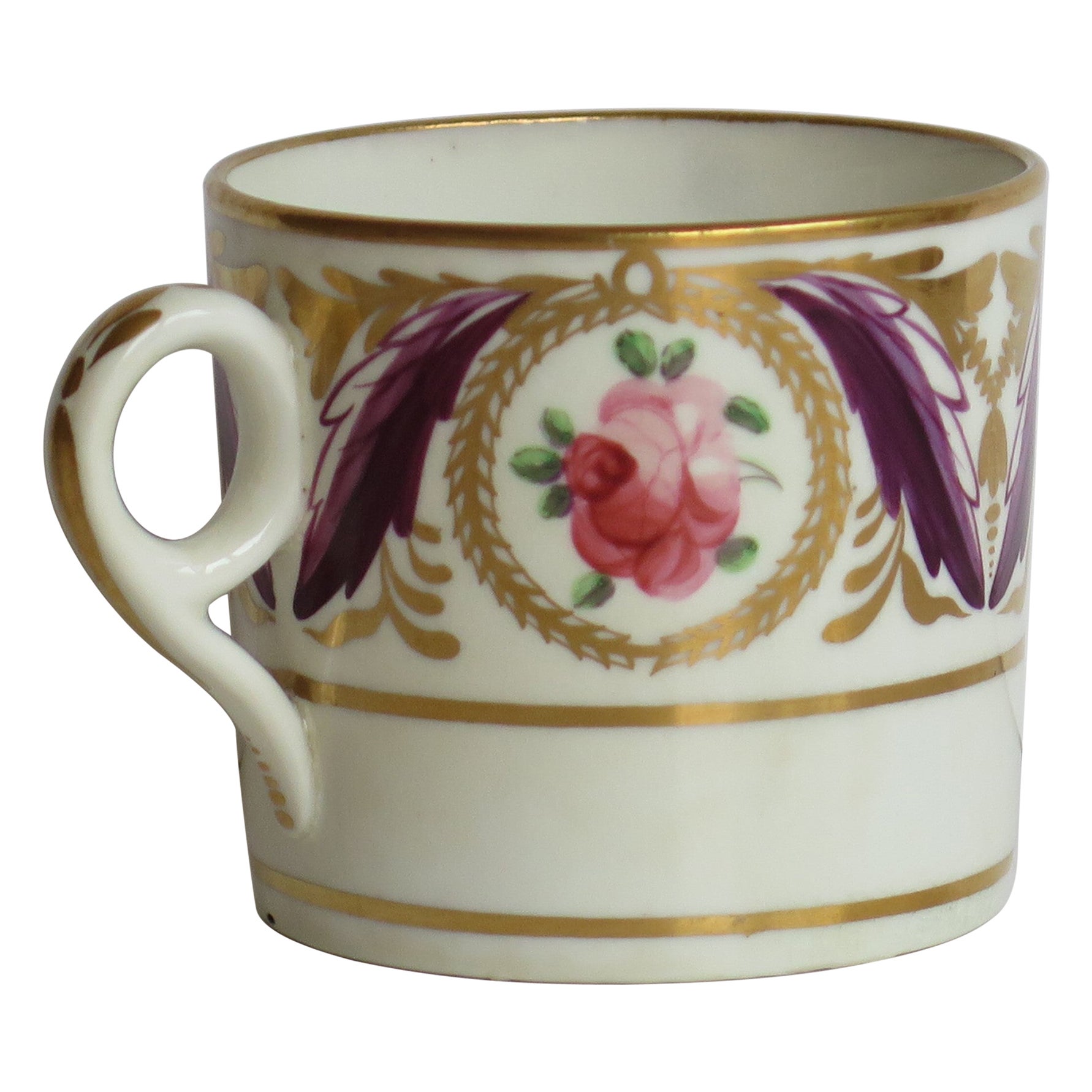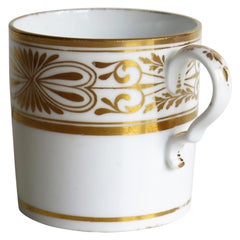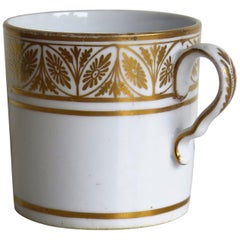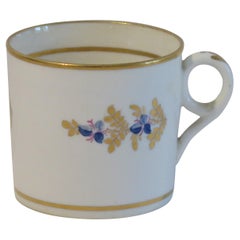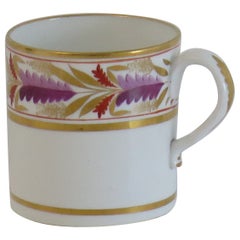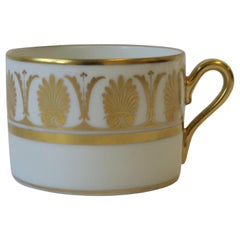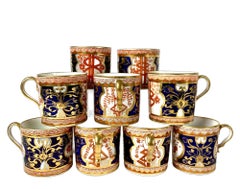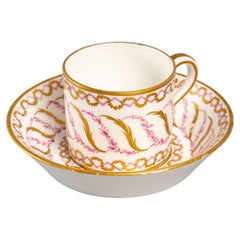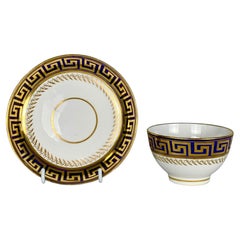Items Similar to Early 19th Century Spode Porcelain Coffee Can Greek Key Pattern 742, circa 1810
Video Loading
Want more images or videos?
Request additional images or videos from the seller
1 of 15
Early 19th Century Spode Porcelain Coffee Can Greek Key Pattern 742, circa 1810
$259.39
£185
€219.81
CA$353.99
A$394.20
CHF 205.16
MX$4,860.39
NOK 2,612.83
SEK 2,455.81
DKK 1,640.05
Shipping
Retrieving quote...The 1stDibs Promise:
Authenticity Guarantee,
Money-Back Guarantee,
24-Hour Cancellation
About the Item
This is a very good example of an English George III period, porcelain, coffee can, made by Spode in the early 19th century, circa 1810.
The can is nominally straight sided and has the Spode loop handle with a pronounced kick or kink to the lower part, with a lower attachment that curves out from the cup. Spode is the only factory with a handle of this exact shape.
The can has a very distinctive and beautifully hand painted "Greek Key" pattern with rich mazarine blue enameling and hand gilded detailed decoration in gold. The outer handle is also hand gilded. Heavily gilded porcelain of this period were called candlelight wares because of the brilliance of their gilding.
This can is marked to the base with the pattern number 742.
- Attributed to:Josiah Spode (Manufacturer)
- Dimensions:Height: 2.57 in (6.53 cm)Width: 3.3 in (8.39 cm)Depth: 2.57 in (6.53 cm)
- Style:George III (Of the Period)
- Materials and Techniques:
- Place of Origin:
- Period:
- Date of Manufacture:circa 1810
- Condition:Wear consistent with age and use. NO Cracks, NO Hairlines, NO Restoration. Very slight loss of gilding to inner rim in places. Please see images.
- Seller Location:Lincoln, GB
- Reference Number:Seller: P 21191stDibs: LU990334475912
About the Seller
5.0
Platinum Seller
Premium sellers with a 4.7+ rating and 24-hour response times
Established in 1993
1stDibs seller since 2013
1,389 sales on 1stDibs
Typical response time: <1 hour
Associations
LAPADA - The Association of Arts & Antiques Dealers
- ShippingRetrieving quote...Shipping from: Lincoln, United Kingdom
- Return Policy
Authenticity Guarantee
In the unlikely event there’s an issue with an item’s authenticity, contact us within 1 year for a full refund. DetailsMoney-Back Guarantee
If your item is not as described, is damaged in transit, or does not arrive, contact us within 7 days for a full refund. Details24-Hour Cancellation
You have a 24-hour grace period in which to reconsider your purchase, with no questions asked.Vetted Professional Sellers
Our world-class sellers must adhere to strict standards for service and quality, maintaining the integrity of our listings.Price-Match Guarantee
If you find that a seller listed the same item for a lower price elsewhere, we’ll match it.Trusted Global Delivery
Our best-in-class carrier network provides specialized shipping options worldwide, including custom delivery.More From This Seller
View AllEarly 19th Century Spode Porcelain Coffee Can Hand Gilded Pattern 1099, Ca 1810
By Spode
Located in Lincoln, Lincolnshire
This is a fine example of an English George III period, porcelain, coffee can (cup), made by Spode in the early 19th century, circa 1810.
The can is nominally straight sided and h...
Category
Antique Early 19th Century English Regency Ceramics
Materials
Porcelain
Early 19th Century Spode Porcelain Coffee Can All Hand Gilt Pattern, circa 1810
By Spode
Located in Lincoln, Lincolnshire
This is a good example of an English George III period, porcelain, coffee can (cup), made by Spode in the early 19th century, circa 1810.
The can is nominally straight sided and h...
Category
Antique Early 19th Century English Regency Ceramics
Materials
Porcelain
George 111 Early Minton Porcelain Coffee Can Hand Painted Pattern 76, Ca 1805
By Minton
Located in Lincoln, Lincolnshire
This is a finely painted porcelain coffee can made by the Minton factory, England, in the reign of George 111 in the early 19th century, circa 1805
Straight sided coffee cans were only originally made for about the first 20 years of the 19th century and are very collectable.
The porcelain can is well potted with a ring handle.
It is finely hand decorated in Minton's recorded Pattern Number 76, having three sets of horizontally painted...
Category
Antique Early 19th Century English George III Porcelain
Materials
Porcelain
Georgian Spode Coffee Can Porcelain hand decorated & marked SPODE, circa 1810
By Spode
Located in Lincoln, Lincolnshire
This is a very good quality porcelain coffee can by Spode of Staffordshire, England, made during the very early 19th century, George 111rd period, circa 1805.
The coffee can is no...
Category
Antique Early 19th Century English George III Ceramics
Materials
Porcelain
Fine Georgian period Minton Porcelain Coffee Can Pattern 641, Circa 1805
By Minton
Located in Lincoln, Lincolnshire
This is a finely painted porcelain coffee can made by the Minton factory, England, in the reign of George 111 in the early 19th century, circa 1805
Straight sided coffee cans wer...
Category
Antique Early 19th Century English George III Ceramics
Materials
Porcelain
George 111 Minton Porcelain Coffee Can Hand Painted in Pattern 791, Ca 1805
By Minton
Located in Lincoln, Lincolnshire
This is a finely painted porcelain coffee can made by the Minton factory, England, in the reign of George 111 in the early 19th century, circa 1805
Straight sided coffee cans wer...
Category
Antique Early 19th Century English George III Ceramics
Materials
Porcelain
You May Also Like
Richard Ginori Italian White & Gold Coffee or Tea Cup, circa 1960s, 8 Avail
By Richard Ginori
Located in New York, NY
Very beautiful vintage Italian white porcelain with gold gilt coffee or tea cup(s) by designer Richard Ginori, Italy, circa mid-20th century, circa 1960s. Colors include: gold gilt a...
Category
Mid-20th Century Italian Classical Roman Porcelain
Materials
Gold
Antique Spode Dollar Pattern Coffee Cups, Set of 9, English Porcelain Circa 1820
By Spode
Located in Katonah, NY
Perfect for a double espresso!
These nine "Dollar" pattern porcelain coffee cups are handpainted in the exquisite "Dollar" pattern.
Spode made this set in England circa 1820.
The dec...
Category
Antique Early 19th Century English Regency Tea Sets
Materials
Porcelain
Coffee Cup in Porcelain of Sevres, from the 18th Century
Located in Saint-Ouen, FR
Coffee cup in porcelain of sevres, from the 18th century
Beautiful 18th century coffee cup in Sèvres porcelain.
Dimensions: H:6.5cm, D: 11cm.
Category
Antique 18th Century French Louis XVI Porcelain
Materials
Porcelain
Antique Cup and Saucer English Porcelain Greek Key Pattern Blue Ground Ca.1820
By Coalport Porcelain
Located in Katonah, NY
This elegant antique porcelain tea bowl and saucer were hand-painted at Coalport Porcelain in England circa 1820.
They are decorated in the Regency style with a band of gilded Greek ...
Category
Antique Early 19th Century English Neoclassical Porcelain
Materials
Porcelain
Italian Gilt Porcelain Cup
By Real Fabbrica Ferdinandea 1
Located in New York, NY
Italian gilt porcelain cup. Real Fabbrica Ferdinandea hand-painted demitasse cup with rose painted surround above a gilt fish-scale. Band with gilt rim ...
Category
Antique Late 18th Century Italian Serving Pieces
Materials
Porcelain
Coffee Cup, Kakiemon Decoration, Plymouth, circa 1769
By Plymouth Porcelain Factory 1
Located in Melbourne, Victoria
Coffee cup in hard-paste porcelain, decorated with Kakiemon painting. The fruits of the Plymouth factory are perhaps the first examples of hard-paste porc...
Category
Antique Mid-18th Century English Japonisme Porcelain
Materials
Porcelain
$1,360 Sale Price
20% Off
